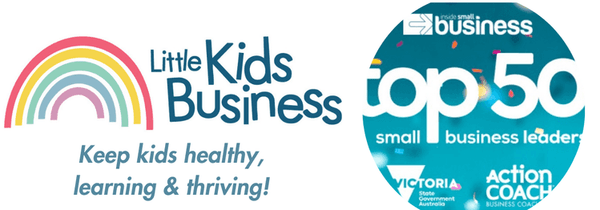Exercise during pregnancy is beneficial – and the same is true for your postpartum period and that is why we are talking Postpartum Exercise today.
However, our body is different after birthing, and getting back to your workouts can be harder than it seems.
Although every woman is unique, there are some shared experiences. Women frequently report atrophied muscles – especially the pelvic area, the back and the core. Many also feel aches in their body, fatigue and depression.
Exercise can help with these issues – but they are also what makes it challenging.
If you’re eager to start moving, you might be wondering when you can start and what exercises you can safely do to slowly regain your strength and mobility.
How Soon After Giving Birth Can You Exercise?
There’s no “one size fits all” rule when it comes to postpartum exercise. Professionals agree that your start date will depend on the type of pregnancy and delivery.
The usual postnatal check-up comes after six to eight weeks of birth. However, if you had a healthy pregnancy and a vaginal delivery, you don’t necessarily have to wait so long to start your exercise. Some women are able to incorporate light movements as soon as one week after giving birth.
It’s also completely normal if you need much longer than that. That is common if you had complications, such as cesarean delivery or severe vaginal tears.
In those scenarios, it is best to consult your doctor to determine when it’s safe to exercise. It is possible you’ll need to wait a couple of weeks and up to two months before you return to fitness.
Invest this time in meeting your gorgeous newborn and allowing yourself to relax.
In all cases, there are some signs that you’re not ready to exercise again:
- Vaginal and abdominal pain
- Bleeding or other fluid leakages
- A feeling of discomfort or heaviness in your pelvis region
If you feel you’re ready to exercise, start with simply increasing movement with short walks.
Those who had complications and want to invest in their exercise program could make use of postnatal physiotherapy, that will help with your strength, alignment, breathing and joint health.
Otherwise, you can also start building your own routine with some of the best postnatal exercises we listed below.
How Can I Get Back To Exercise After Pregnancy?
After your doctor cleared you for starting to exercise, it’s important to ease into it. Even if you exercised before and throughout your pregnancy, the postpartum period comes with its unique challenges.
Pushing yourself too hard after delivery can have a negative effect on your rehab. Make sure to wait for the bleeding to stop, as some women can experience heavier bleeding if they start exercising too intensively. Additionally, don’t force weight loss if breastfeeding. You need to up your calorie intake in this period. So instead of excessively cutting your calories, begin building healthier eating and lifestyle habits. This is the slower method, but it’s also the best one if you want to enjoy tong term results.
One of the best tips we can give for safe return to exercise is to start with gentle walks, and slowly add on other movements, like Pilates, yoga and stretching.
Why Is Postnatal Exercise Important?
After all disclaimers you’ve read in our article or heard in other places, you might be discouraged to start your post-pregnancy exercise. But that shouldn’t be the case.
Postpartum exercise has countless benefits, both for your physical and mental health.
Gentle exercise after giving birth can:
- Increase your energy
- Combat muscle and joint pain
- Improve your posture
- Strengthen abdominal muscles, which were stretched in pregnancy
- Relieve stress and anxiety
- Combat postpartum depression and boost your mood
- Improve your sleep
- Boost overall strength and stamina
- Promote weight loss
Postpartum Exercise Guidelines
In this section, we’ll go through the best types of exercises you can do in your postpartum period.
The goal of working out in this period is to slowly build up your core and pelvic floor strength. On a different level, it will help you combat anxiety and sleep better.
Although these exercise styles differ, one rule extends to all of them: focus on things that make you feel great and be gentle to your body.
Here are the 5 Best Postpartum Exercise Types To Regain Your Strength
1. Pelvic Floor Exercises
Since doctors recommend them throughout pregnancy, you likely already know how to perform pelvic floor or kegel exercises.
They are extremely important postpartum too, as they help to strengthen the pelvic floor muscles, which are stretched in pregnancy.
Kegels also help you heal faster as they boost circulation in this area, as well as stabilize the joints. Finally, once you’re ready to have sex again, these exercises help to tone your vagina which can increase pleasure for you and your partner.
You can designate a time for Kegels or repeat them throughout the day.
2. Swimming
Swimming is an awesome postpartum activity. It stimulates your cardiovascular system but doesn’t put much pressure on your muscles and joints.
Swimming and aqua aerobics are both great activities for building muscle tone too.
However, swimming isn’t something you should do right after giving birth. If you had a c-section, wait until the scarring has healed and get approval from your doctor first. Otherwise, it is advisable to wait until you went through a week without bleeding. After that – there’s a good chance you feel good enough to hit the pool.
3. Postpartum Yoga
Many women found relief in doing yoga in the postnatal period. That’s no surprise – yoga offers almost everything you and your body need postpartum.
Yoga strengthens the core and the pelvic floor, boosts your energy and improves the posture. Although postpartum depression is a serious illness and you might need therapy and medication, yoga can decrease the symptoms. It also lowers anxiety and stress with breathing exercises and brings a sense of ease and acceptance.
However, not all yoga poses are appropriate for your postnatal period. It would be best to follow a video from a professional, or even better – go to a postnatal class where you can connect to other new moms.
4. Pilates
Pilates is quite similar to yoga when it comes to targeting the muscles which get weaker in pregnancy. It’s a fantastic choice for those who want to build up their strength for more vigorous workouts.
Pilates is a low impact exercise, so it gives you great physical benefits while keeping you safe.
Swiss ball exercises are considered particularly great in the postpartum period. Some good examples are the Swiss ball glute bridge, which stabilizes the core and the pelvic floor, and the Swiss ball bird dog, which works on the posture and reduces lower back pain.
If you have children of age to try some Yoga poses, these Yoga cards for Kids are often used in Childcare Centres to inspire flexibility and movement.
5. Light Cardio
In the first couple of months after giving birth, just walking while pushing your stroller can be a fantastic workout in itself. Explore routes, and try finding one that has hills to challenge your legs more. You can also try to gradually accelerate your pace.
When you’re ready, you can build up to group classes such as cycling or dance workouts, which will boost your cardio, burn calories and help you release any tension or negative feelings.
Wrapping Up
Exercising in the postpartum period strengthens your core and pelvic floor muscles. It also boosts your mood, and reduces anxiety and depression.
As long as you listen to your body and give yourself patience and time, you will slowly build your strength and mobility back, drop the added weight and become more energized and confident to take care of your newborn – and yourself.




